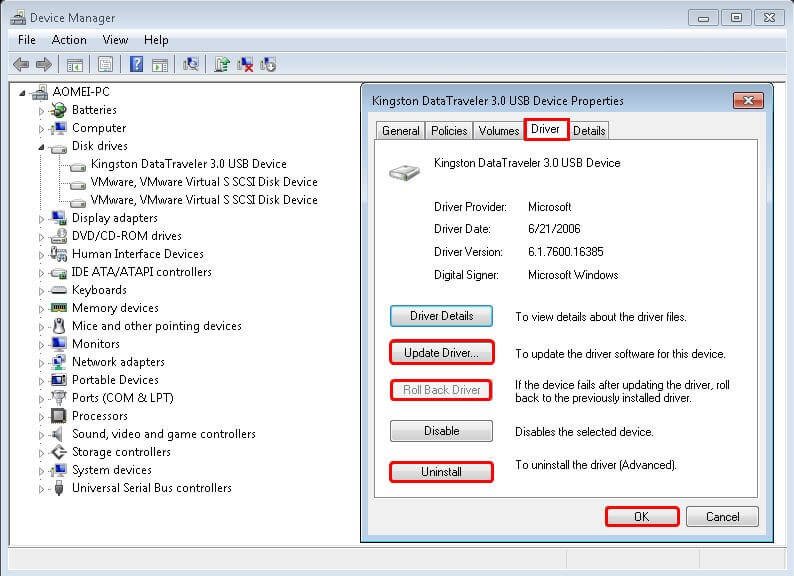
- No one can make virtual lpt port in win7 how to#
- No one can make virtual lpt port in win7 install#
- No one can make virtual lpt port in win7 64 Bit#
- No one can make virtual lpt port in win7 serial#
I have no idea if any of these steps didn't actually make a difference but I wanted to list everything that I did in case it might work for you. To work with most of the tools you are likely to use with microcontrollers, the COM port should be 1, 2, 3, or 4.
No one can make virtual lpt port in win7 serial#
You will see one entitled USB Serial Port, with the assigned COM port number identified in brackets. The list of avail-able ports will be revealed. I then plugged in my second mBed and it is now appearing on COM5 Click on the + sign next to Ports (COM & LPT). Plugged in the mBed and let it reinstall itslef.įINALLY - the mBed appeared as mBed Serial Port COM3 I then changed the default COM3 port number manually from the default value of COM3 to COM4 in Port Settings
No one can make virtual lpt port in win7 install#
Selected (Standard Port Types) and Communications Port and proceeded to install it. Under Common Hardware Types selected Ports (COM&LPT)

I then went 'Action>Add Legacy Hardware>Install the hardware that I manually select from a list (Advanced)
No one can make virtual lpt port in win7 how to#
Remove registry entries in the serial comm folder.Įventually I found that I could manually add comm ports In device manager. Mode 0: How to capture an LPT port or COM port. Delete ghosted devices by showing hidden devices in the Device Manager. I had to uninstall all the mBed drivers, delete the oem*.inf and *.pnf files. I had tried everything on these forums and eventually fixed my problem. To find a driver for this device, click Update Driver." instead of showing up under "Ports (COM & LPT)Īny suggestions how to get comms working again, anything I can clean up in the registry etc, anything I can check at the mbed end to see that comms is working at that end? Maybe the fact that no lpt port actually exists has something to do with the fact that the spool won’t print but it. The redirect does in fact work in the fact that it spools the file and sends the spool file to the print queue. However, you can still use the net use lpt1 printername. There is no driver selected for the device information set or element. I realize that there is no lpt port to redirect from. The drivers for this device are not installed.

In fact it's now got worse, when I install mbedWinSerial_16466 it shows up in Device Manager as "Other devices | mbed Composite Device" with the error The first 1768 I tried showed no output using TeraTerm as a client, switching to another 1768 and it worked! I'm now connected to a 11U24 and I have seen no sign of comms over USB despite a number of re-installs of the mbedWinSerial_16466 driver. Hosting on an i5 running Win7 64 bit, I installed mbedWinSerial_16466.exe. My biggest problem is the serial comms over USB for debug logging. I've just started working with mbed H/W (LPC1768 & LPC11U24) and it's good stuff. I also have problems with mbed USB serial (mbedWinSerial_16466.exe) I can use other PCs.so this is not a critical issue just and inconvenience. The driver is from ARM, so that I guess someone at ARM should be able to confirm this error? The mdeb device shows up as an unknown USB composite device after running the install.

does your PC hardware include serial or printer ports)? My PC has no hardware serial or parallel ports, so that this may cause trouble for the mbded serial installer since the PORTS category is missing under Windows Device Manager.
No one can make virtual lpt port in win7 64 Bit#
Peter - does your 64 bit system include PORTS under device manager (i.e. The driver works fine on other windows 7 and XP systems running 32 bit. I tried the UAC to minimum.I get a popup message that the driver was installed successfully.but on another screen I see an error occured because the driver could not be located! I look in the Windows event log and find this:ĭriver USB returned invalid ID for a child device (101000000000000000000002F7F049E2).


 0 kommentar(er)
0 kommentar(er)
